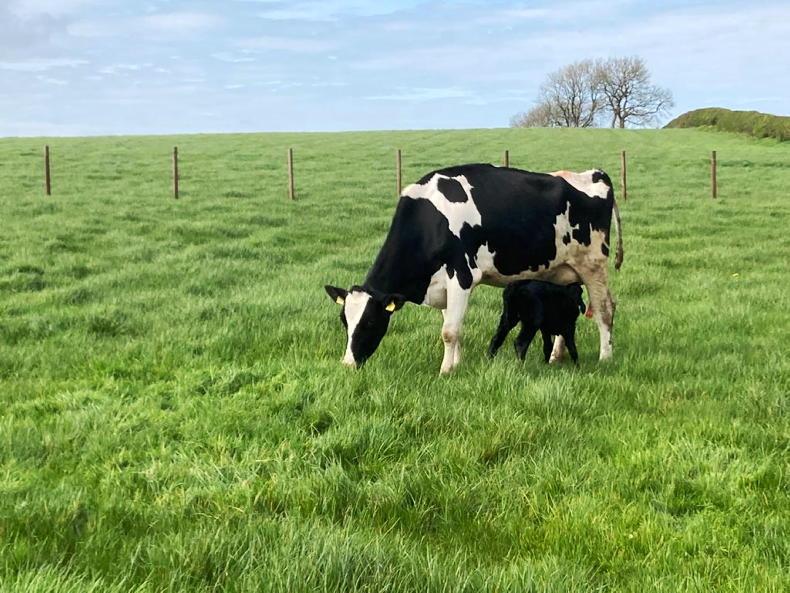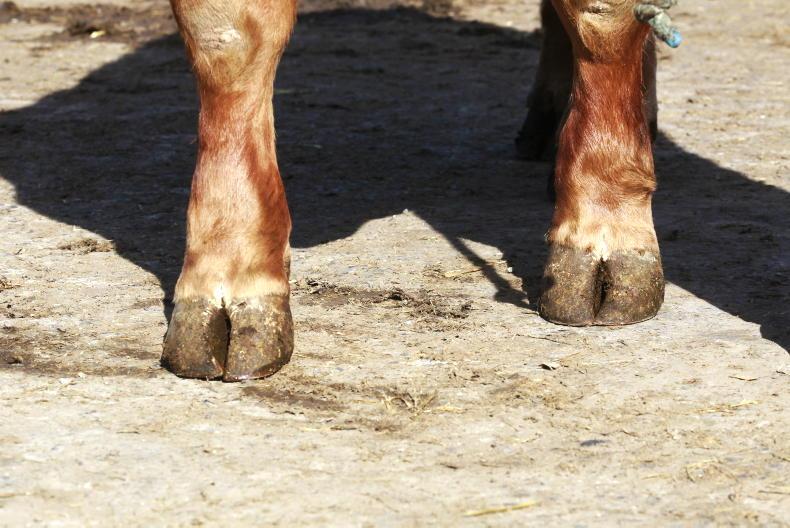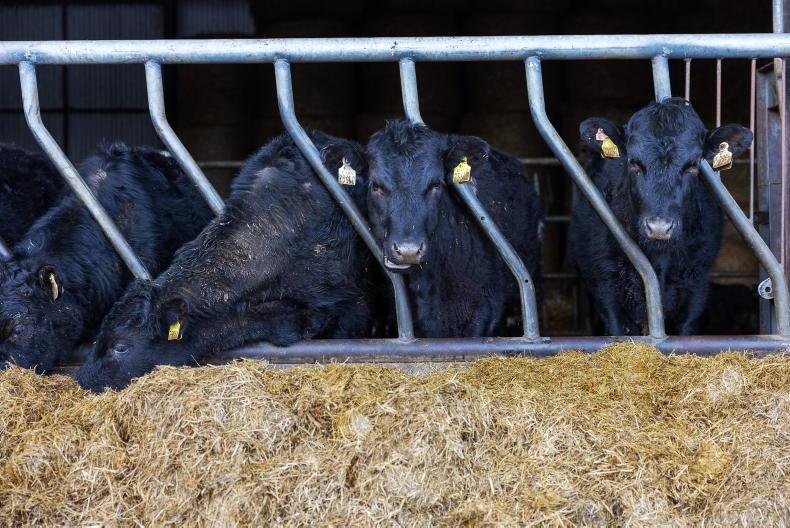If it’s too wet for all other jobs you can always go and do a bit of power-washing.
That policy has ensured over the last month that I have spent days cleaning calf pens, machinery and the exterior of all farm buildings.
While we have taken weather windows as they were presented to sow fertiliser and Physiolith (a soil conditioner), field work has been limited due to wet ground conditions.
On Easter Saturday we started our spring barley ploughing (16 acres) and grassland rolling campaign. However, between the end of play on Saturday evening and Monday morning conditions had reverted back to their sticky form and with that I was reunited with the power-washer.
While it is satisfying to be on top of the many the jobs that are often neglected at this time of year, the inability to progress with field work has been extremely frustrating.
As I intend to direct drill a grass reseed into the spring barley stubble straight after harvest, it is important that we get the barley sown soon to ensure that the grass is drilled no later than the middle of September.
If I try to be positive, there has been good levels of grass growth (despite recent frosts) that will ensure the cows get a decent bite whenever the glorious day of turnout comes.
Mastitis
An unspoken rule of dairy management is never to think, let alone say, that you have mastitis or somatic cell count under control. As soon as you do you will inevitably have an extensive outbreak.
We have had periods were we could go for over a month without a case and within two days of identifying the first one, you could find another three.
In a simple parlour like ours without the benefit of milk conductivity meters, good practice such as pre-stripping and milk recording are tools that must be utilised to reduce disease risk.
Almost always within an outbreak there would be one “frequent flyer” who is probably the initial source of the infection.
On this basis, over the last three years we have made a concerted effort to cull all cows that have more than three cases of mastitis in a lactation, regardless of production level or other parameters.
I have learned though painful experience that keeping routinely infected cows is a false economy as they compromise the health and production of other cows.
Currently our 12-month rolling SCC is 67, and over the last year we have had 10 cases of mastitis, with six of these coming from three cows, so there is still work to do.
While reduced incidence of mastitis has made the herd much easier to manage, there is always the fear an outbreak is never far away.
Farm family
My favourite childhood memories are not of holidays or days away but simply of helping with farm tasks alongside my parents and siblings. It is an opportunity that few other careers offer.
Tasks such as lifting stones or stacking straw bales (before the advent of the telehandler) could be seen as unpleasant undertakings without a social factor.
The enjoyment that comes with such tasks was pointed out to me by wife who specifically asked me to wait until she was off at the weekend to vaccinate stock.
She says she enjoys the job despite my incredibly patronising instructions on how to vaccinate cattle correctly, ignoring the fact that she has 10 years of extensive medical training behind her.
Also, I probably sound more like a platoon sergeant ordering his men up Omaha Beach rather than someone who is trying to manoeuvre a batch of Holstein heifers into the crush.
It really should be made clear in pre-marriage classes involving farmers that anything said while moving livestock should not be taken personally.
Read more
Too many silent heats and waiting for spring
Watch: lambing sheep best left to young farmers
If it’s too wet for all other jobs you can always go and do a bit of power-washing.
That policy has ensured over the last month that I have spent days cleaning calf pens, machinery and the exterior of all farm buildings.
While we have taken weather windows as they were presented to sow fertiliser and Physiolith (a soil conditioner), field work has been limited due to wet ground conditions.
On Easter Saturday we started our spring barley ploughing (16 acres) and grassland rolling campaign. However, between the end of play on Saturday evening and Monday morning conditions had reverted back to their sticky form and with that I was reunited with the power-washer.
While it is satisfying to be on top of the many the jobs that are often neglected at this time of year, the inability to progress with field work has been extremely frustrating.
As I intend to direct drill a grass reseed into the spring barley stubble straight after harvest, it is important that we get the barley sown soon to ensure that the grass is drilled no later than the middle of September.
If I try to be positive, there has been good levels of grass growth (despite recent frosts) that will ensure the cows get a decent bite whenever the glorious day of turnout comes.
Mastitis
An unspoken rule of dairy management is never to think, let alone say, that you have mastitis or somatic cell count under control. As soon as you do you will inevitably have an extensive outbreak.
We have had periods were we could go for over a month without a case and within two days of identifying the first one, you could find another three.
In a simple parlour like ours without the benefit of milk conductivity meters, good practice such as pre-stripping and milk recording are tools that must be utilised to reduce disease risk.
Almost always within an outbreak there would be one “frequent flyer” who is probably the initial source of the infection.
On this basis, over the last three years we have made a concerted effort to cull all cows that have more than three cases of mastitis in a lactation, regardless of production level or other parameters.
I have learned though painful experience that keeping routinely infected cows is a false economy as they compromise the health and production of other cows.
Currently our 12-month rolling SCC is 67, and over the last year we have had 10 cases of mastitis, with six of these coming from three cows, so there is still work to do.
While reduced incidence of mastitis has made the herd much easier to manage, there is always the fear an outbreak is never far away.
Farm family
My favourite childhood memories are not of holidays or days away but simply of helping with farm tasks alongside my parents and siblings. It is an opportunity that few other careers offer.
Tasks such as lifting stones or stacking straw bales (before the advent of the telehandler) could be seen as unpleasant undertakings without a social factor.
The enjoyment that comes with such tasks was pointed out to me by wife who specifically asked me to wait until she was off at the weekend to vaccinate stock.
She says she enjoys the job despite my incredibly patronising instructions on how to vaccinate cattle correctly, ignoring the fact that she has 10 years of extensive medical training behind her.
Also, I probably sound more like a platoon sergeant ordering his men up Omaha Beach rather than someone who is trying to manoeuvre a batch of Holstein heifers into the crush.
It really should be made clear in pre-marriage classes involving farmers that anything said while moving livestock should not be taken personally.
Read more
Too many silent heats and waiting for spring
Watch: lambing sheep best left to young farmers










SHARING OPTIONS